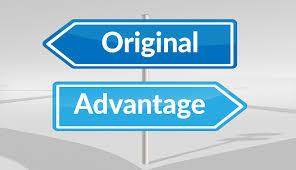
What is Medicare, and who is eligible for it?
Medicare is a federal health insurance program primarily for people aged 65 and older, certain younger individuals with disabilities, and people with End-Stage Renal Disease (ESRD). It provides coverage for hospital care (Part A), medical services (Part B), and prescription drugs (Part D), with options to add supplemental coverage (Medigap) for additional costs.

What are the key differences between Medicare and private health insurance?
Medicare is a federal program that provides standardized coverage options for eligible individuals, while private health insurance plans are offered by private companies and vary widely in terms of coverage, costs, and provider networks. Medicare typically has lower premiums for Part A but may require premiums and co-payments for other parts depending on income and plan choice.
How does eligibility for Medicare affect my choice between Medicare and private health insurance?
Eligibility for Medicare is primarily based on age (65 and older), disability status, or having ESRD. If you qualify for Medicare, you can choose between Original Medicare (Parts A and B) with or without prescription drug coverage (Part D), or Medicare Advantage plans (Part C) offered by private insurers. Private health insurance may be chosen as a supplement to Medicare or instead of it, depending on individual circumstances and coverage needs.

What are the advantages of private health insurance over Medicare?
Private health insurance plans often offer broader provider networks, more flexibility in coverage options (such as dental and vision), and additional benefits like wellness programs or gym memberships. Some people prefer private insurance for its customization options and potential for lower out-of-pocket costs depending on the plan.
How can I determine which option – Medicare or private health insurance – is best for me?
To determine the best option, consider factors such as your health needs, preferred doctors and hospitals, prescription drug needs, budget for premiums and out-of-pocket costs, and any supplemental coverage options needed. Compare the coverage, costs, and benefits of Medicare and private health insurance plans to make an informed decision.
Table: Comparison of Medicare vs. Private Health Insurance

| Feature | Medicare | Private Health Insurance |
|---|---|---|
| Eligibility | Age 65 or older, certain disabilities, ESRD | Varies by plan and insurer, often available to all ages |
| Coverage Options | Standardized options: Original Medicare (Parts A, B, D) and Medicare Advantage (Part C) | Varied plans: HMOs, PPOs, EPOs, with different coverage levels and options |
| Premiums | Part A typically premium-free; Parts B, D, and Medigap require premiums | Varies widely by plan, may be lower or higher depending on coverage |
| Provider Networks | Generally narrower network, but coverage nationwide | Broader network options with varying levels of coverage |
| Benefits and Additional Coverage | Standard benefits with options for additional coverage through Medigap | Customizable benefits including dental, vision, wellness programs |
| Prescription Drug Coverage | Part D for prescription drugs; coverage may vary by plan | Included in some plans, may require separate coverage |
| Out-of-Pocket Costs | Co-payments, deductibles, and coinsurance | Co-payments, deductibles, coinsurance, and potentially higher out-of-pocket costs |
| Flexibility and Customization | Limited customization options; additional coverage available through Medigap plans | High customization potential, with options to tailor coverage to specific needs |
| Government Regulation | Federally regulated with standardized benefits | Subject to state and federal regulations with varying plan options |
